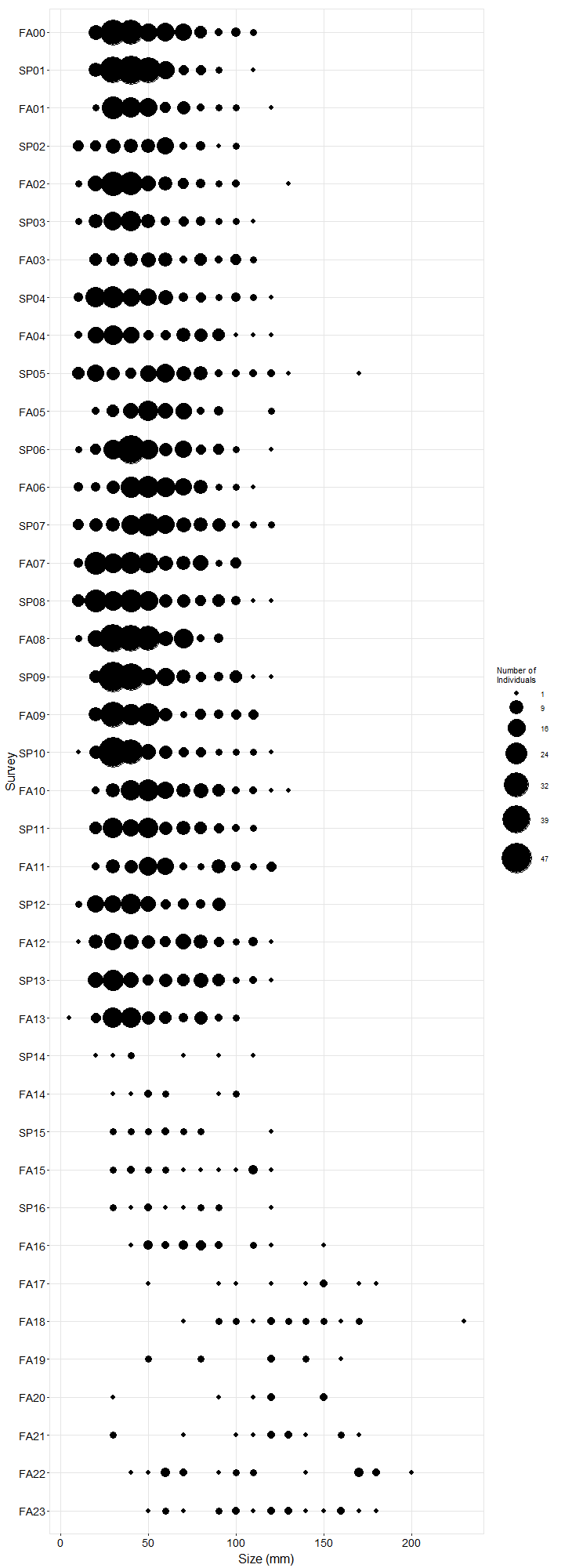
Long-Term Monitoring Trend Graphs
Anemone plots at Boat House are mainly a mixture of medium-sized, solitary Anthopleura sola, and several small species of red algae (primarily Chondracanthus canaliculatus). Chondracanthus canaliculatus has been recorded as having high cover at this site overall by the biodiversity surveys. Anemone cover has been fairly low but constant over the nearly 40-year span that this long-lived species has been monitored. In recent years, both the red alga, Mazzaella spp. and the sandcastle worm, Phragmatopoma, have increased in these plots. In fall 2015, plots 4 and 5 were not sampled because they remained submerged at low tide.
Barnacle plots at Boat House mainly consist of Chthamalus dalli/fissus, although Balanus glandula has occasionally reached cover levels as high as 15-20% in three of the five plots (note that species were not distinguished until 2001). Cover of Chthamalus/Balanus in the barnacle plots at Boat House was initially high (approximately 80%) and then plummeted to around 20% for the next several years, replaced largely by the red turf alga, Endocladia. Endocladia cover remained high in most plots until around 2001, when it experienced a sharp decline in all five photoplots. Since fall 2001, barnacles have again been the most abundant species in these plots.
A similar swapping of species occurred in the Endocladia plots, where declines of the red turf alga in 1992 and 1998 were followed by steady increases in the rockweed, Silvetia. Silvetia cover experienced a sharp decline in 2008, and it appears that barnacles have recruited to the available bare space. For nearly 30 years (since 1998), Endoclaida cover has hovered around 30%, but Silvetia cover began slowly increasing again in 2020, which could shift community dynamics within the plots.
Silvetia cover in Silvetia plots remained high until 2007, when a slow, steady decline persisted until 2015. Rockweed cover in plots 3, 4 and 5 were heavily impacted by winter storms between 2007-2015, and plot 5 has still not recovered. Overall, cover has been steady at around 35% since 2015. In some plots open space remains bare, whereas in others it has been filled in somewhat by Endocladia, the red blade alga Mazzaella, and Phragmatopoma, which has also increased site wide in recent years. Silvetia plots were not sampled in fall 1995.
Further investigation into the dynamic interaction among barnacles, Endocladia, and Silvetia over space in the upper intertidal has revealed that the barnacle zone has experienced periods where it shifted upward, into areas that were previously bare rock. It had long been assumed that the upper limits of species’ zones were set by physical factors such as temperature and emersion time, and were thus stable, while the lower limits were set by biological interactions (e.g. competition and predation). However, the upward shifts of species zones documented in this study suggest that facilitation, a biological factor, is important for establishing species’ upper limits. In this case, barnacles are facilitating the upward movement of Endocladia by providing favorable settlement substrate and a refuge from grazers, and Endocladia is providing suitable habitat for Silvetia, above the zone where it previously occurred. The process is likely “reset” every so often by an extreme event (e.g. large storm waves or a period of above average warm weather), which removes Endocladia and Silvetia living above their “normal” tidal level, freeing up bare space for new settlement of barnacles.
Mytilus cover remained relatively high throughout most of the nearly 40-year period that mussel plots have been monitored at Boat House. One exception was plot 4, which was accidentally cleared in winter 2005 by another researcher working at the site. Recovery of Mytilus has been slow in this plot, likely because a number of owl limpets (Lottia gigantea) moved into the open space. These large grazers maintain algal “farms”, within which they remove most newly settled organisms in order to provide a large area for diatoms to grow.
Sea stars at Boat House were variable in number over time but were relatively stable overall until sea star wasting syndrome (SSWS) caused numbers of the ochre star, Pisaster ochraceus, to plummet in spring 2014. Prior to 2014, relatively small (<50mm) Pisaster ochraceus were common at this site, indicating that recruitment to the region was fairly constant. In recent years however, juveniles have been rare or absent, which suggests that recovery of ochre stars to pre-2014 levels will be slow. Boat House is one of the few sites monitored by MARINe where the bat star, Patiria miniata, is found consistently in sea star plots. This species typically occurs in the subtidal, or very low intertidal, below our monitoring plots. Several Patiria miniata were observed to have disease symptoms at this site, and it is likely that SSWS has impacted the Patiria population at Boat House.
In order to standardize species resolution across all MARINe groups and over time, some species (typically rare) were lumped for graphical presentation of Long-Term monitoring data. See lumped categories for definitions (some variation occurs between methods and over time).
If you experience any barriers accessing the trend graphs below, please contact (pacificr@ucsc.edu) for help.
Photo Plots

Below are the trends observed for each Photo Plot target species at this site. Long-Term percent cover trend graphs also include any species that reached a minimum of 25% cover during any single point in time within a given target species assemblage. Breaks in trend lines represent missed sampling events. For additional species observed that did not meet this 25% threshold, please use the Graphing Tool.
Anthopleura (Anemones) – percent cover
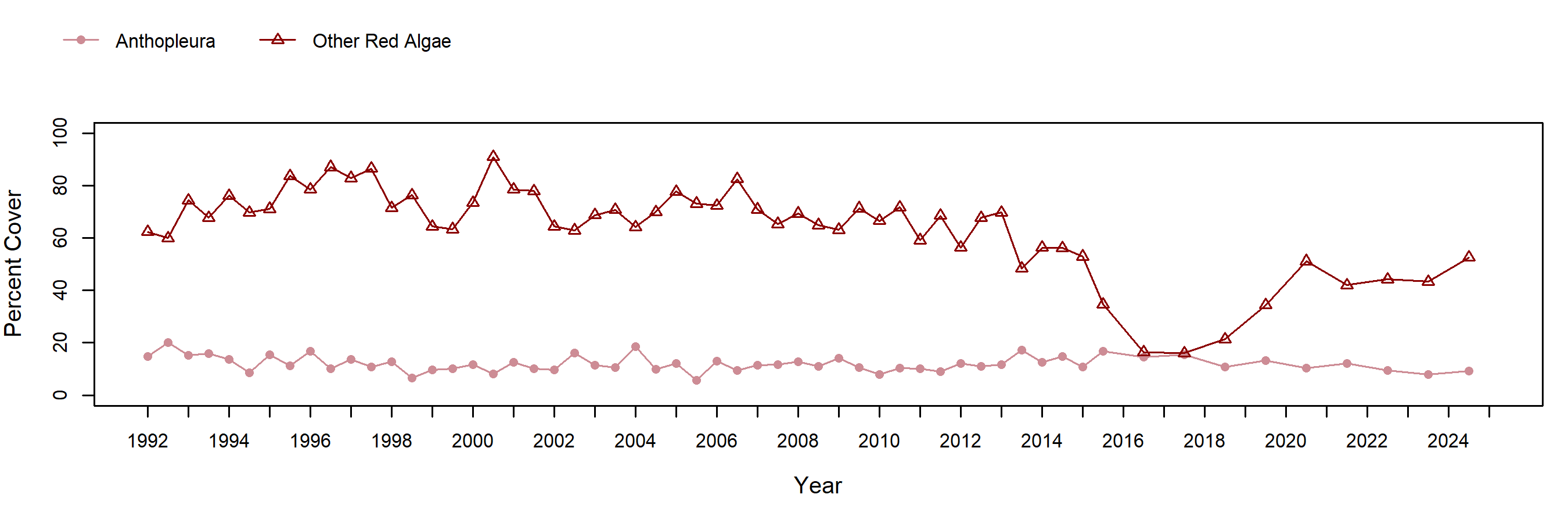
Chthamalus/Balanus (Acorn Barnacles) – percent cover

Chthamalus/Balanus (Acorn Barnacles) – motile invertebrate counts
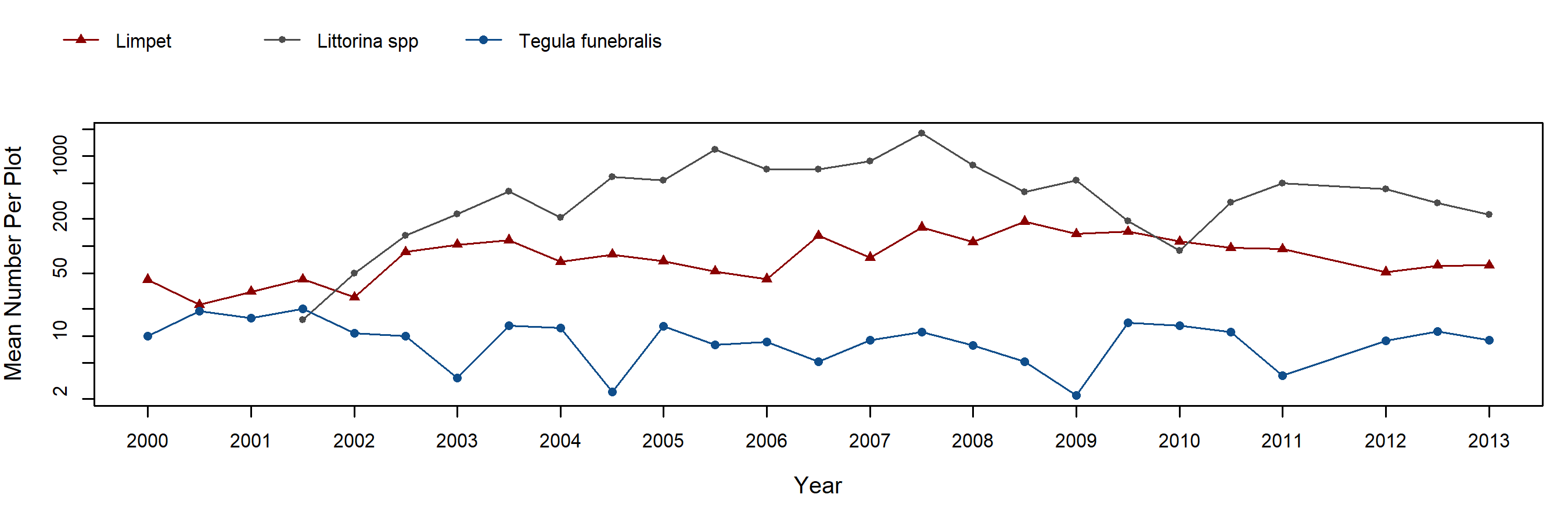
Mytilus (California Mussel) – percent cover
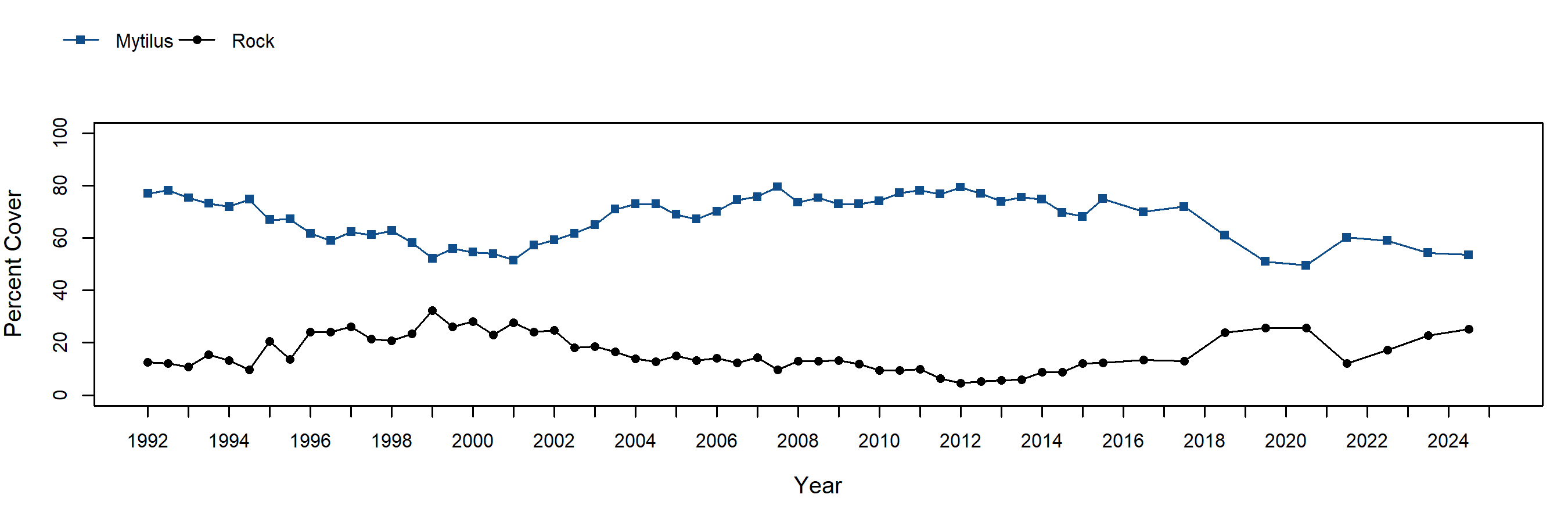
Mytilus (California Mussel) – motile invertebrate counts
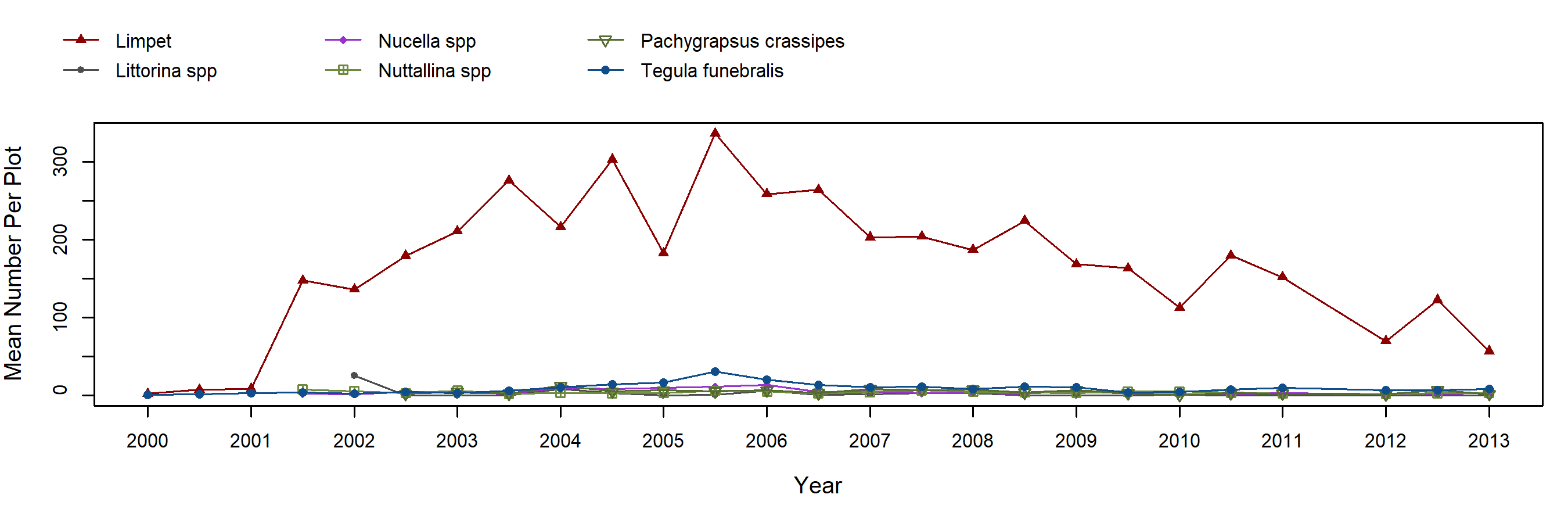
Silvetia (Golden Rockweed) – percent cover
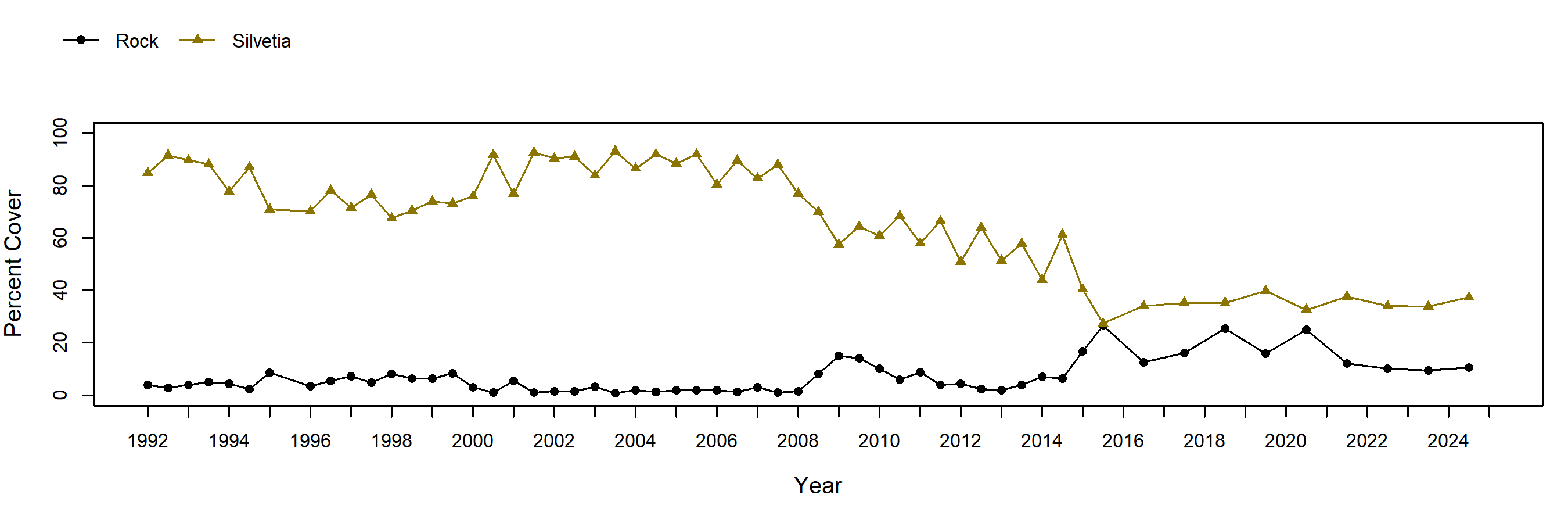
Silvetia (Golden Rockweed) – motile invertebrate counts
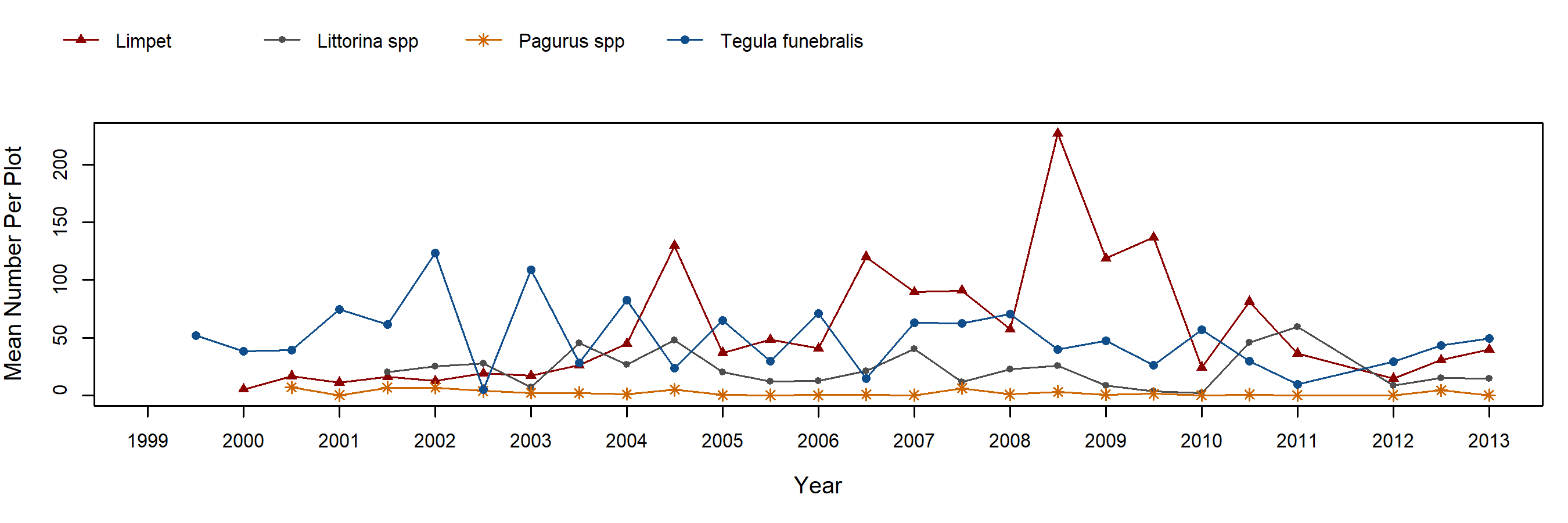
Endocladia (Turfweed) – percent cover
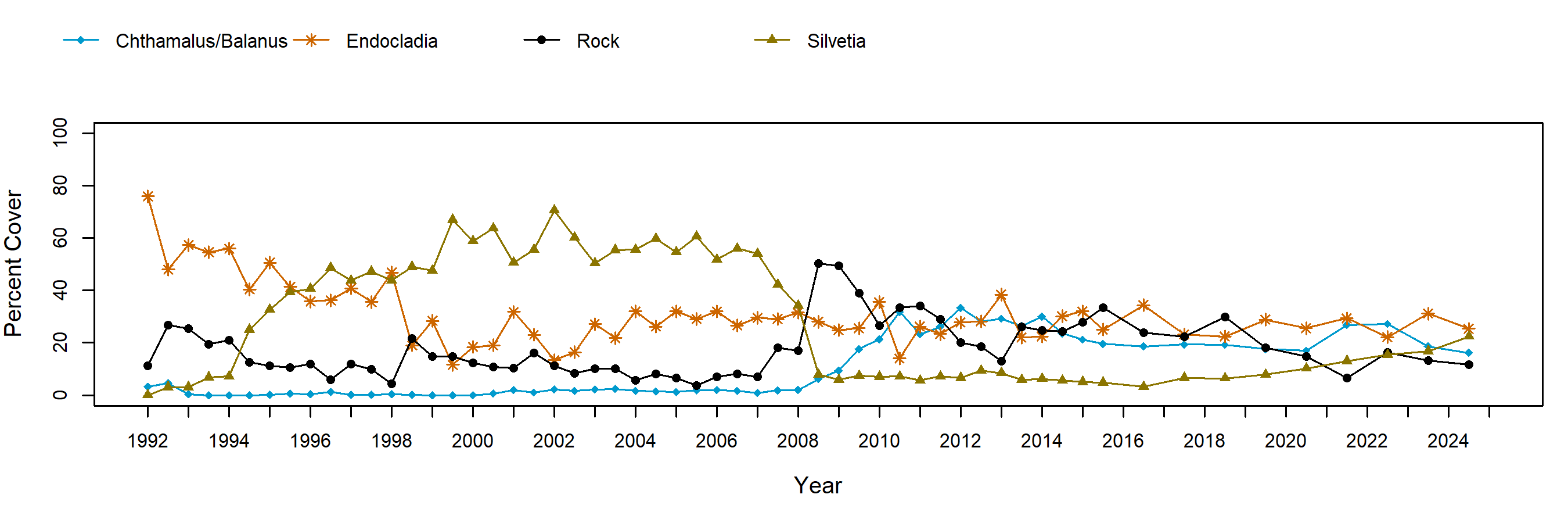
Endocladia (Turfweed) – motile invertebrate counts
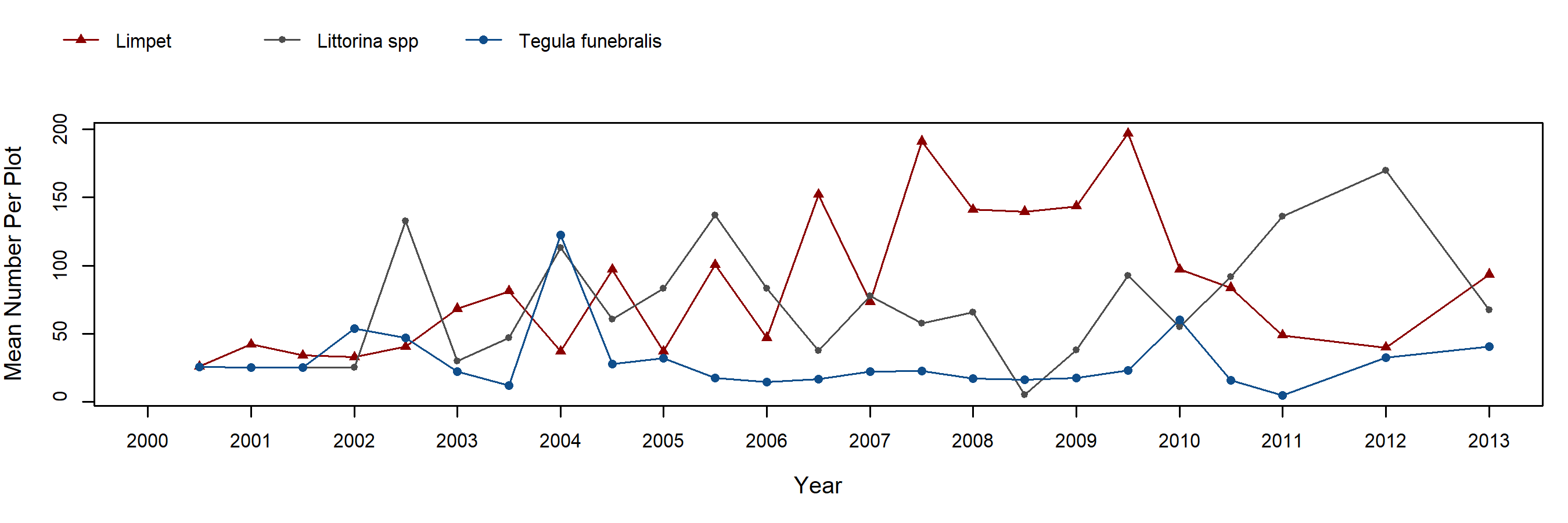
Species Counts and Sizes

Species Counts and Sizes (where recorded) for Pisaster are shown below for this site. At some sites, other sea star species and Katharina are counted in addition to Pisaster. The sum of all individuals across all plots is displayed. Note that data gaps are represented by breaks in long-term count trend lines, but are not shown in size plots.
Pisaster ochraceus (Ochre Star) – counts
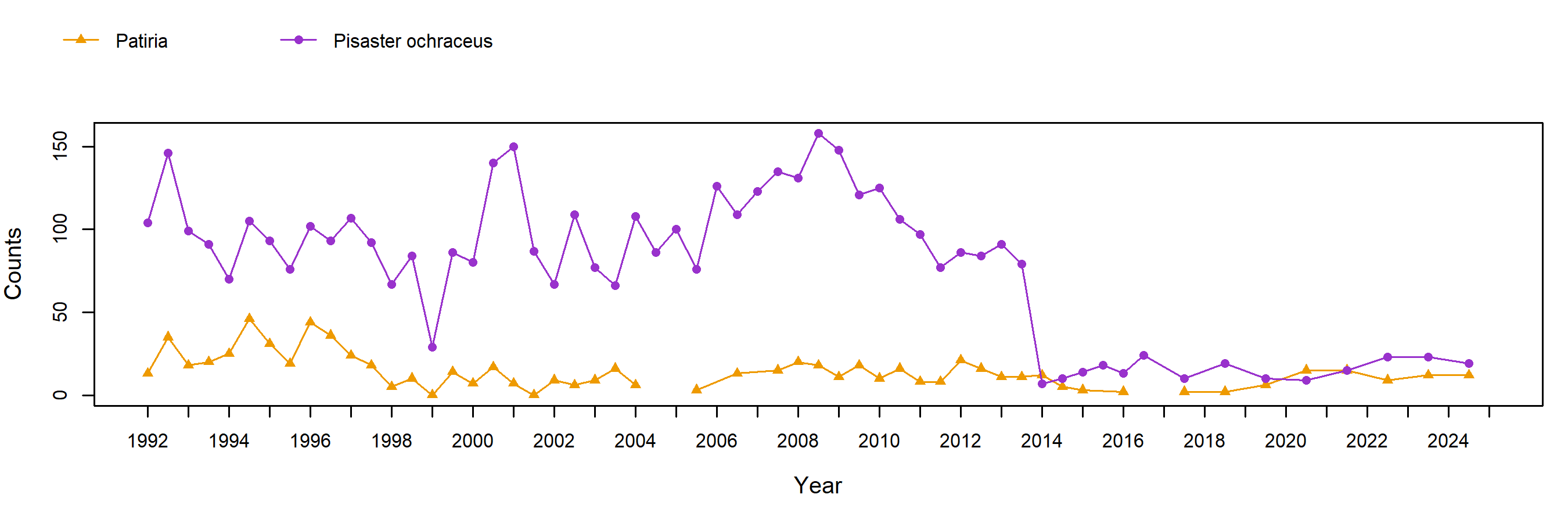
Pisaster ochraceus (Ochre Star) – sizes
